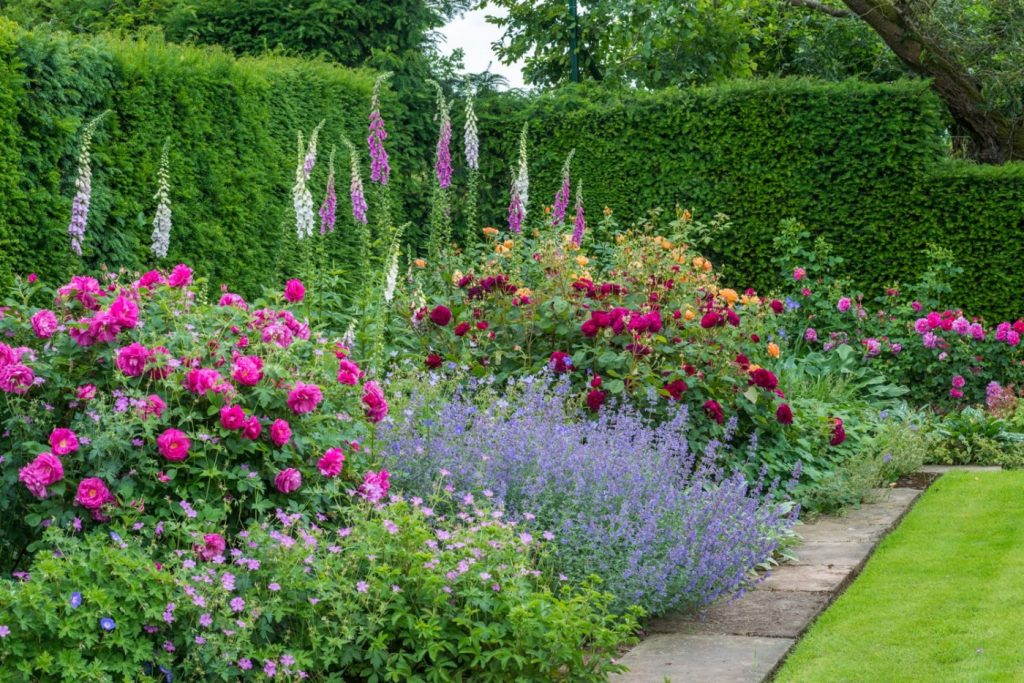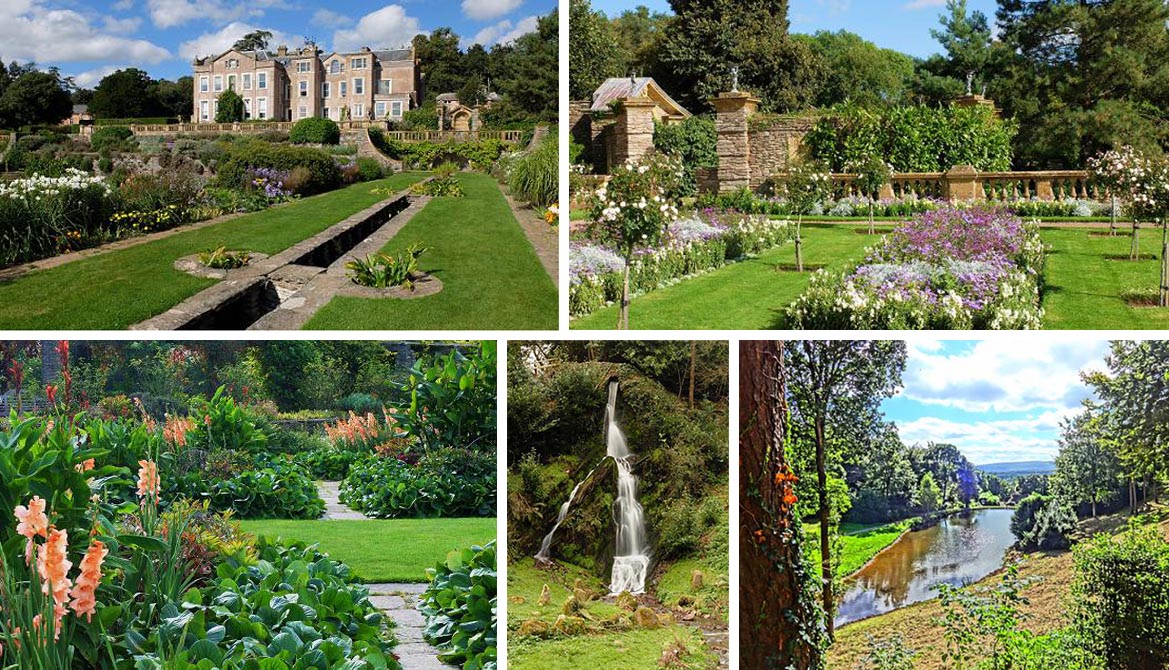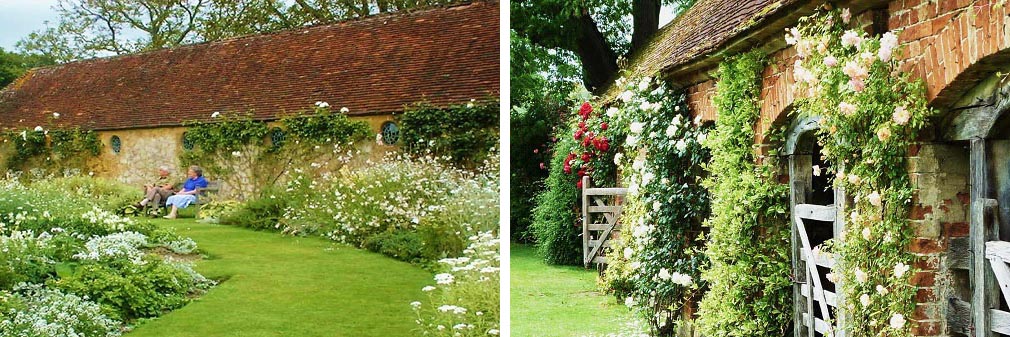Who is Gertrude Jekyll?
Gertrude Jekyll was born in 1843 in London. Study art and painting. In her studies, she is particularly struck by Turner and Monet’s use of color to achieve exciting effects.
He met William Morris and John Ruskin who, with their vision of architecture and the creation of the Arts and Crafts movement, marked his way of making gardens.
For Gertrude, in fact, each project is a fine chiseling of the external space which, from being designed near the house, fades into the natural by moving away from it.
How did Gertrude Jekyll’s passion for the garden begin?
She grew up with a passion for flowers and spent much of her time as a child among the plants in the garden. We must think that the gardens of that time were not the size of those today. What they called gardens were plots of land of several acres where the part closest to the house was landscaped with lawns and flowering shrubs and herbaceous perennials. Moving away from the house, you came across woods, clearings, rivers and many other scenarios full of wild beauty.
Walking in the garden was therefore a complete experience in contact with nature where the young Gertrude could come into contact not only with the flowers, but also with the behavior of plants in their natural habitats.
Forest and garden
Learn to know trees and their behavior in the woods but also ferns and undergrowth plants, making them structural elements of your gardens. In fact, there is always an approach to the forest in the project and various “flowerbeds” in the forest which have the purpose of accompanying the view of those who walk there but also of providing a backdrop for more important plants.
She has the opportunity to travel and meet garden owners and designers who open her mind to the organization of garden spaces. Before her there was the Tudor garden full of lawns, hedges and “knot” flowerbeds, i.e. pruned in such a way as to resemble knots (see the article on “topiary art” here). Gertrude Jekyll was therefore the advocate, with a few others, of a diametrical change in approach to garden design where respect for plants was found as opposed to the previous one focused only on the client’s wishes.
Gertrude Jekyll’s books and articles
Jekyll wrote many books and many articles for the most prominent gardening magazines of the time. This one we are talking about, “Testament of a Gardener”, is a posthumous book and collects forty of his articles, building a rather complete vision of his mature work.
It’s not easy to read a Gertrude Jekyll book. The constant references to plants with scientific and non-scientific names, some of which no longer exist, often make his lines lists difficult to remember and reconstruct in one’s mind to visualize flowerbeds. You have to read it lightly, glossing over these sequences of scientific names a bit and enjoying the almost adoring descriptions of a plant or a place in its smallest aspects.
He often helps himself with drawings and photos. There are diagrams in pen, in plan that make up spots with a name inside. The photographs are necessarily in black and white, as color does not yet exist. A sure way to understand his work, for those who don’t have all the existing plants memorized, is to visit the gardens that still host his work and which we point out at the bottom of the article and which you see in the photos.
The structure of the project
However, the structure of his constructions is clear. For example, a design mechanism that he had discovered was that the cold colors in a flowerbed should be placed towards the beginning and end of the same, while the warm ones should go to the center. Furthermore, it is not advisable to include strong and delicate colors in a single flowerbed. These indications give the composition that pathos that he wanted to achieve visually.
Another precaution is to pay attention to the mixing of the colors of the leaves in the flowerbeds. In front, for example, he suggests always inserting gray leaf essences such as cineraria maritima or stachys lanata which lighten and complete the composition.
Like any self-respecting landscape designer, he builds the groups of plants so that each season has its own beauties, including flowers, leaves and berries, but he goes further by inviting us to cover some shrubs which, after a single annual flowering, they will no longer attract attention.
In fact, letting one plant cover another is a concept that we do not often find expressed today.
But how many plants could be used in the early twentieth century?
Gertrude Jekyll often spoke about how many types of plants were at her disposal compared to the past and she rejoiced at the variety of effects she was able to create by mixing them. Each time, reading these lines, I thought about how much else could have been invented today when there are 100 times as many plants available. Even with a limited number of plants, he managed to introduce a large quantity of colors and shapes into a garden that are often not even present in today’s gardens.
His vision of the formal garden is interesting. Perhaps today we would call it “large in size” because, the way he talks about it, preferring the more intimate Mediterranean garden, one might think that he means a garden where the flowerbeds are lost in a space that is too large to be exploited.
What can’t we propose again today?
What can’t we easily reproduce about Gertrude Jekyll’s teachings? For example, the size of the flowerbeds you mention is rarely feasible today for modern gardens. We need to rethink the reasoning. The soil in which he planted these exciting and enormous flowerbeds was first treated every year to a depth of 1/1.5 m. this type of approach is not feasible today due to both costs and water availability and climate change.
One of the important teachings, however, is to put an odd number of neighboring specimens per species, not just one per species, so that you have a nice view of flowers of that type.
The books of Gertrude Jekyll
At the moment in Italian you can find:
Click on “Testamento di un giardiniere” if you wish to purchase the book
click on “Bosco e Giardino” if you wish to buy the book
We will equip ourselves to offer you others as well.
The gardens that can be visited today designed by Gertrude Jekyll
You can find the gardens designed by Gertrude Jekyll that have been restored based on her designs or inspired by her, which can now be visited here.
It was not easy to lead you into a world as broad as that of the thirty-year life and work of this enlightened landscape designer. We hope we have managed to outline its profile and have encouraged you to delve deeper.
the Mondo del Giardino advice
The great secrets of Gertrude Jekyll’s work are between the lines so, even if some pieces seem heavy to you, don’t skip them, but read them lightly, without dwelling too much but understanding what you read otherwise you’ll miss the best.
Now on horseback! Work awaits us! Our new wonderful outdoor space is about to be born!
GOOD WORK and … if you have any questions please write to info@mondodelgiardino.com
Image sources: thanks for the photo from social media brummellmagazine.co.uk, for the cover photo garlandsofhearts.blogspot.com and for the others in the article greatbritishgardens.co.uk, gardenvisit.com, blog.sofasandstuff.com , grayshottgardeners.net and getyourguide.it.










